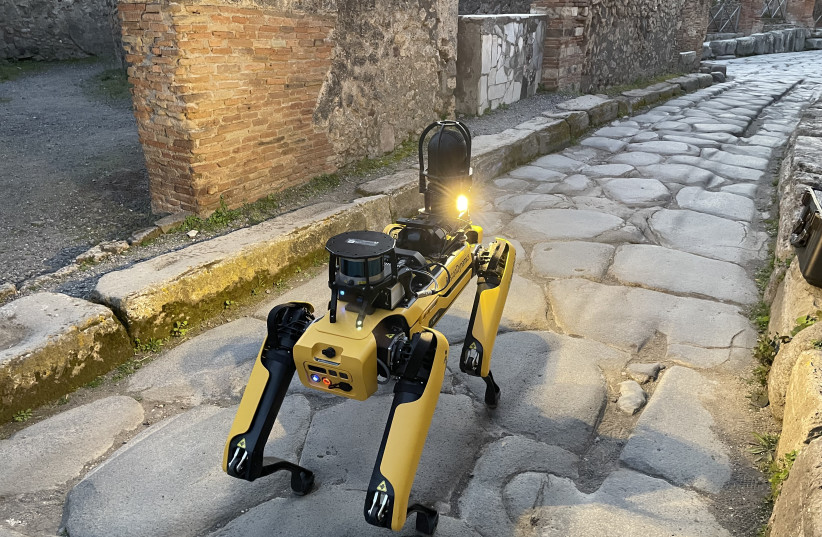A four-legged robot known as “Spot” might be able to provide a solution to safety and structural issues at archaeological sites.
For now, the dog-like autonomous robot is being tested to detect such issues at Pompeii Archaeological Park, and will have its official introduction and demonstration later this month following the inauguration of the new Art and
Sensuality in the Houses of Pompeii exhibition.
In the meantime, park officials have been busy examining the little robot’s novel technological monitoring solutions, deploying it throughout the vast 160-acre (65-hectare) archaeological site including in tunnels dug by antiquities
thieves, which has been a continuous problem at the park.
“Often the safety conditions within the tunnels dug by grave robbers are extremely precarious, as a consequence of which the use of a robot could signify a breakthrough that would allow us to proceed with greater speed and in total safety,” said park director-general Gabriel Zuchtriegel.
Built by Boston Dynamics, Spot is capable of safely inspecting even the smallest of spaces to gather and record data useful for the study and planning of interventions, according to a park statement.

Zuchtriegel noted that while advances in the world of robotics, artificial intelligence and autonomous systems have already produced innovative solutions in industry and manufacturing, these technologies had not found an application in archaeological sites because of their size and varied environmental conditions.
Thanks to collaboration with hi-tech companies, he said, they have been able to test the use of Spot in the underground tunnels created by the thieves as part of a memorandum of understanding with the Public Prosecutor’s Office of Torre Annunziata, Naples, Italy.
They are also experimenting with the use of a flying laser scanner capable of autonomously conducting 3-D scans to monitor the site.
The use of these innovative automated technologies, which include smart platforms for data analysis, is part of the park’s ongoing work to improve the quality of the monitoring of its different areas, and to assess the progress of
recovery and restoration works in order to manage the safety of workers as well as of the site, said the park in its statement.
“These experiments form part of the broader Smart@POMPEI project of the Archaeological Park of Pompeii, which aspires to an intelligent, sustainable and inclusive management of the park, which makes use of an integrated technological solution, rendering Pompeii a Smart Archaeological Park.”
Before COVID-19, millions of people annually visited the famed archaeological site of Pompeii annually. Located 23 kilometers (14 miles) southeast of Naples, it was a thriving Roman city before being destroyed in 79 CE following the volcanic eruption of Mount Vesuvius.
The city, including both buildings and human residents, remains frozen in time, having been largely preserved in place under the thick ash from the volcano.
The Italian government declared a state of emergency at the UNESCO World Heritage site in 2008, deploring the poor conditions there, and appointed a special commissioner to resolve the situation.
Two years later, following a series of structural collapses at the site – including the Schola Amaturaum thought to have been used for training by gladiators and the House of the Moralist – the UN sent experts on an urgent visit to
Pompeii to assess the extent of damage, threatening to remove Pompeii from the prestigious World Heritage List if Italy did not take measures to protect the site.
